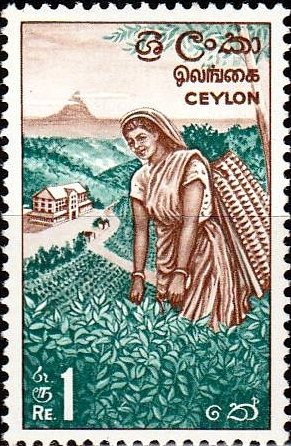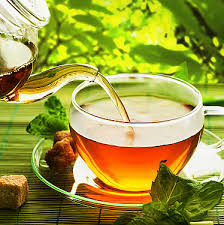Stamp: Tea picker (Sri Lanka 1964)
Tea picker (Sri Lanka 1964)
01 October (Sri Lanka ) within release Local motives goes into circulation Stamp Tea picker face value 1 Ceylonese rupee
| Stamp Tea picker in catalogues | |
|---|---|
| Michel: | Mi:LK 329 |
| Stamp Number: | Sn:LK 379 |
Stamp is square format.
|
Data entry completed
53%
|
|
|---|---|
| Stamp Tea picker in digits | |
| Country: | Sri Lanka |
| Date: | 1964-10-01 |
| Print: | Photogravure |
| Perforation: | 14 |
| Emission: | Definitive |
| Format: | Stamp |
| Face Value: | 1 Ceylonese rupee |
Stamp Tea picker it reflects the thematic directions:
Agriculture is the cultivation and breeding of animals, plants and fungi for food, fiber, biofuel, medicinal plants and other products used to sustain and enhance human life.[1] Agriculture was the key development in the rise of sedentary human civilization, whereby farming of domesticated species created food surpluses that nurtured the development of civilization. The study of agriculture is known as agricultural science. The history of agriculture dates back thousands of years, and its development has been driven and defined by greatly different climates, cultures, and technologies. Industrial agriculture based on large-scale monoculture farming has become the dominant agricultural methodology.
Tea is an aromatic beverage prepared by pouring hot or boiling water over cured or fresh leaves of Camellia sinensis, an evergreen shrub native to East Asia which probably originated in the borderlands of southwestern China and northern Myanmar. Tea is also made, but rarely, from the leaves of Camellia taliensis. After plain water, tea is the most widely consumed drink in the world. There are many different types of tea; some have a cooling, slightly bitter, and astringent flavour, while others have profiles that include sweet, nutty, floral, or grassy notes. Tea has a stimulating effect in humans, primarily due to its caffeine content
A woman is an adult female human. Before adulthood, a woman is referred to as a girl (a female child or adolescent)
Flora is the plant life occurring in a particular region or time, generally the naturally occurring or indigenous—native plant life. The corresponding term for animal life is fauna. Flora, fauna and other forms of life such as fungi are collectively referred to as biota. Sometimes bacteria and fungi are also referred to as flora, as in the terms gut flora or skin flora.




